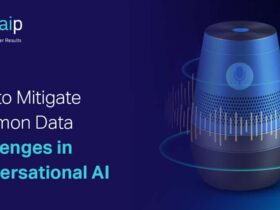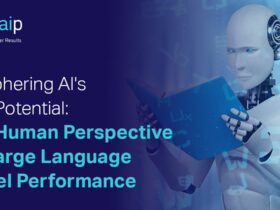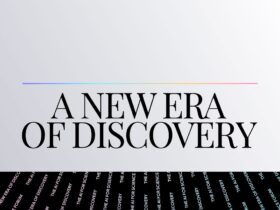Machine learning is a career path that’s growing fast. It’s in high demand across many industries. Job postings for ML roles have jumped 344% from 2015 to now.
Machine Learning Engineers make an average of $112,806 a year. The highest earners can make up to $246,480. This isn’t just a trend; it’s a future-proof career choice.
LinkedIn says ML is one of the top 10 skills for 2023. And 94% of companies see AI as key to their success. ML is changing fields like healthcare and finance.
Mckinsey says 50% of companies already use AI. Gartner predicts 75% will by 2025. You don’t need a tech background to get into this field. Employers value problem-solving skills more than degrees.
Key Takeaways
- Machine Learning roles saw 344% job growth from 2015 to 2021.
- Average ML Engineer salaries exceed $112k annually, with top earners hitting $246k.
- LinkedIn lists ML as a top 10 skill, while 94% of companies prioritize AI adoption.
- Networking drives 70% of job opportunities in ML, with transferable skills easing transitions.
- By 2025, 75% of businesses will operationalize AI, creating lifelong career opportunities.
The Growing Demand for Machine Learning Professionals
Machine learning careers are booming, with ML job growth outpacing traditional roles. Companies worldwide are racing to adopt AI. This creates unprecedented opportunities for those exploring a machine learning for career switch. Let’s break down the data.
Current Industry Growth Statistics
In India, over 76% of businesses are investing in AI. This fuels demand for roles like ML engineers and data scientists. Key industries driving this expansion include:
- Technology: Google, Microsoft, and Amazon lead in hiring.
- Healthcare: Predictive diagnostics and personalized medicine.
- Finance: Fraud detection and algorithmic trading.
- Retail: Dynamic pricing and customer analytics.
Salary Comparisons Across Industries
Salaries reflect this demand. Compare machine learning roles to other fields:
| Role | Entry-Level (USD) | Mid-Career | Senior-Level |
|---|---|---|---|
| ML Engineer | $90,000–$120,000 | $130,000–$170,000 | $180,000–$250,000 |
| Data Scientist | $85,000–$115,000 | $125,000–$160,000 | $190,000+ |
Future Projections for ML Jobs
A 2023 World Economic Forum report predicts ML roles will grow 40% by 2030, creating 23 million jobs globally.
Specialized areas like NLP and computer vision command top salaries. Companies are even hiring freelancers and mid-career professionals. This shows the field is open to diverse backgrounds.
With frameworks like TensorFlow and tools like AWS SageMaker driving innovation, the path to entry is clearer than ever. Whether you’re in healthcare or finance, transitioning into ML offers stability and growth. Let’s explore how next.
Why Consider Machine Learning for Career Switch
Starting an AI career change or career transition to ML is exciting. It combines your skills with the latest technology. This path is great for those looking to grow and make a difference.
Machine Learning Engineer ranked as The Best Job of 2019 with a market growth of 344%.
Transferable Skills from Other Fields
Many skills from different fields are useful in ML. For instance:
- Marketing professionals: Analytical thinking for customer segmentation
- Healthcare workers: Pattern recognition for diagnostics
- Engineers: Problem-solving frameworks for algorithm design
Lower Barriers to Entry Than Traditional Tech Roles
No computer science degree? Start with Python libraries like TensorFlow and Scikit-learn. Free courses on Coursera or Udemy can help. ML focuses on practical skills, not just degrees!
Remote Work Opportunities
Remote ML jobs have grown by 40% after 2020. Big companies like Google and IBM hire worldwide. They offer flexible hours and work from anywhere, making it easier to transition careers.
Industries Adopting AI and ML
| Industry | ML Applications |
|---|---|
| Healthcare | Patient diagnostics, drug discovery |
| Finance | Fraud detection, algorithmic trading |
| Retail | Inventory optimization, customer analytics |
| Environmental | Climate modeling, resource management |
Every industry needs people who can solve problems. Your unique view can help you stand out in this growing field. Let’s look at how to start this new path next!
Required Skills to Break into Machine Learning
Getting into machine learning starts with learning key AI job skills. First, you need to understand math basics like linear algebra, calculus, and statistics. These are best learned by doing, not just reading about them. Python is the top choice for machine learning, thanks to libraries like NumPy and Pandas for data work, and Scikit-learn and TensorFlow for building models.
Just knowing the tech isn’t enough. ML for beginners need to think critically and solve problems. It’s important to ask how models help businesses. Good communication skills are also key, as you’ll need to explain tech to non-tech teams. Use Git for easy team work. And make sure to check that data sharing platforms follow strict privacy policies.
- Math fundamentals: Focus on matrices, derivatives, and probability distributions
- Code proficiency: Build Python scripts that clean datasets and deploy models
- Tool fluency: Experiment with Jupyter Notebooks, AWS SageMaker, and Azure ML Studio
Most employers value real-world experience over degrees. Start with simple projects, like a movie recommender using k-nearest neighbors. Joining Kaggle competitions helps you improve your skills. Each project you complete adds to your resume. The field is always changing, so stay curious and keep learning. Follow courses like Coursera’s Machine Learning Specialization to stay up-to-date. Your problem-solving skills, whether from marketing or engineering, are a great starting point. Let’s turn your curiosity into real skills, one algorithm at a time.
Learning Pathways for ML Beginners
Starting your machine learning journey? Let’s look at how to choose the right path. There are machine learning learning paths for everyone. You can start with free tools or invest in programs to speed up your learning.

Self-Taught Options and Resources
Start with free platforms like Coursera’s ML for beginners courses. YouTube channels like Sentdex teach Python and scikit-learn basics. Books like *Python Machine Learning* by Raschka explain algorithms like K-Means clustering.
Practice on Kaggle datasets or build models with Jupyter notebooks. This lets you see theory in action.
Bootcamps vs. Degree Programs
Bootcamps like Springboard offer 6-month programs focused on deploying models in TensorFlow. Traditional degrees provide deep theory but take years. Compare:
- Bootcamps cost $10k–$15k and include job support.
- University programs cost more but build deep theory knowledge.
Certifications That Actually Matter
Seek certifications like AWS Certified Machine Learning-Specialty or Google’s Professional Data Engineer. Avoid generic “AI 101” certs. Focus on credentials that prove proficiency with tools like PyTorch or AWS SageMaker.
Building a Portfolio Without Experience
Start small: create a GitHub repo for projects like predicting sales trends with Linear Regression. Compete in Kaggle’s datasets even if you don’t win. Document your process in blogs or LinkedIn posts to show problem-solving skills.
Employers value code and results over experience years.
Common Challenges in Transitioning to AI Careers
Switching to AI or machine learning comes with its own set of hurdles. These challenges often arise from keeping up with fast-changing tech and filling personal skill gaps. Impostor syndrome is a big issue for those changing careers, as they compare their skills to those in traditional tech fields.
“People whose jobs involve human-to-human interaction are going to be more valuable because they can’t be automated,” said Mitchell, highlighting roles like healthcare workers who rely on empathy.
One big problem is the skills-experience paradox. Employers want to see proven ML experience, but newcomers struggle to get that chance. The machine learning transition also means constant learning. With 84% of C-suite leaders focusing on AI, having outdated skills is a big risk. By 2030, up to 14% of workers might need to change careers because of automation (McKinsey Global Institute).
- Technical barriers: Learning Python, TensorFlow, or PyTorch takes time.
- Economic risks: Lower income during training is a real concern.
- Job market uncertainty: Jobs like data entry clerks or telemarketers are at high risk.
- Soft skill gaps: Being able to explain technical ideas to non-experts is key.
But, there are solutions. Focusing on skills like problem-solving and analytical thinking can help. Platforms like Kaggle and Coursera offer practical learning through projects. Certifications from Google or IBM can also prove your skills. Remember, jobs that need empathy, like healthcare or HR, are less likely to be automated. Stay up-to-date by attending AI conferences and using mentorship networks. Every challenge is a step towards mastering this new field!
Success Stories: Professionals Who Made the Switch
Real AI career change examples show that many backgrounds do well in ML. These successful ML transitions highlight how different views lead to new ideas. Let’s look at how marketers, finance pros, and healthcare workers changed their careers.
| Background | Transition Steps | Outcome |
|---|---|---|
| Marketing | Learned A/B testing principles into ML models for customer segmentation | Now leads recommendation system teams at e-commerce firms |
| Finance | Mastered fraud detection algorithms via Fullstack Academy’s bootcamp | Secured a data scientist role with a 282% salary increase |
| Healthcare | Applied clinical insights to predictive models for patient outcomes | Developed FDA-approved diagnostic tools using ML |
“My engineering background let me see data through a problem-solving lens,” says Shivansh, whose credit approval model achieved 95% accuracy. His journey from site engineer to data scientist proves domain expertise accelerates ML success.
These stories show that successful ML transitions come from mixing old skills with new tech. Start by seeing how your current skills fit into ML. Share your story—your unique view could inspire others!
Timeline Expectations: How Long Does the Transition Take?
Starting a machine learning career means knowing your machine learning career timeline. Your journey depends on your background, how much you study each day, and your learning style. Let’s explore these factors.
- Technical backgrounds (e.g., software developers): 6–12 months
- Non-technical backgrounds: 12–24 months
- Part-time learners: 18–36 months
Here’s how you might progress:
- Phase 1 (1–4 months): Learn math basics (linear algebra, calculus) and coding (Python, SQL).
- Phase 2 (3–6 months): Dive into ML algorithms (scikit-learn, TensorFlow), and learn to work with data.
- Phase 3 (6–12 months): Choose a specialty like NLP, computer vision, or business analytics. Work on 3+ projects.
- Phase 4 (9–18 months): Get ready for job applications. Improve your resume, practice interviews, and validate certifications.
“A structured plan turns uncertainty into progress,” says AI career coach Dr. Emily Torres. “Focus on incremental wins, not just the end goal.”
Keep in mind: no two journeys are the same. A finance pro with Python skills might find a job quicker than a marketer starting from scratch. Use free resources like GeeksforGeeks’ Machine Learning Foundation With Python course to speed up your learning. Celebrate your achievements, like finishing a project or mastering a tool, to stay driven. With the market growing to $140B by 2025, every hour you invest now is valuable. Begin now; your journey begins.
Conclusion: Taking Your First Steps Toward a Machine Learning Career
Starting a machine learning career needs a clear plan. First, learn the basics like Python and tools like TensorFlow and Scikit-learn. Santiago’s story shows that coding skills are more important than advanced math.
Focus on building projects that show your problem-solving skills, not just theory. Start by creating a portfolio on GitHub to show off your practical skills. Join hackathons and engage with communities like Kaggle to meet others in the field.
Practice coding every day with platforms like LeetCode to improve your skills. Make your resume stand out by using keywords like Python and data analysis. When negotiating salaries, use PayScale and Glassdoor to ensure you get a fair deal.
Success comes from not giving up. Santiago says learning by teaching and working with mentors helps you grow faster.
Look into how AI changes healthcare diagnostics to stay motivated. Start with a simple model this week, join a study group, or take an online course. Becoming a machine learning engineer is a journey, but every step is important. Start now and let your curiosity lead you to a rewarding career.












